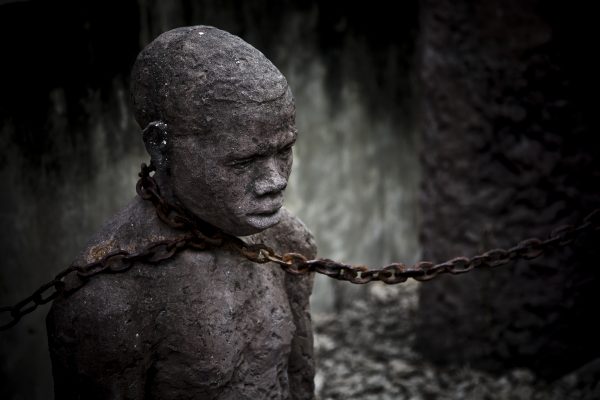The region of the Maghrib is today perhaps one of the most widely known regions of Africa connected to Islam – especially with its close proximity to Europe, many today associate Islam in the Maghrib to the ancient empires of modern-day Morocco and Egypt.
The region of the Maghrib is today perhaps one of the most widely known regions of Africa connected to Islam – especially with its close proximity to Europe, many today associate Islam in the Maghrib to the ancient empires of modern-day Morocco and Egypt.
Islam has been in Africa for so long, since its emergence on the Arabian Peninsula, that some scholars like Douglas E. Thomas have argued that it is a traditional African religion.
The history of Islam in Africa can be traced back to the early 7th century. It is the first continent that Islam spread to from Southwestern Asia.
The religion of Islam began in the Middle East during the early 600s CE. Not long after the death of the Prophet Muhammad in 632 CE, it began spreading in the subcontinent. Islam, therefore, has been integrated with the continent of Africa – especially North Africa – since almost the beginning of the religion itself.
In 655 CE, almost all parts of North Africa felt the presence of Islam. From the Atlantic Ocean through Egypt and Morocco, Islam became a household religion by 709 CE. Many northern Africans were converted to Islam, and Islam had a significant impact on the culture of the region as well. Although some local traditions and values were often incorporated into the religion, Islam had a unifying influence in the government, the culture, the architecture, and the economy.
Muslim Conquest
The religion of Islam began in the Middle East during the early 600s CE. Not long after the death of the Prophet Muhammad in 632 CE, the Arabs began to expand their empire. They first invaded northern Africa in 647 CE. They conquered much of the land but turned back after defeating Libya in return for tribute (payment).
The Arabs once again invaded in 665 CE. This time they conquered virtually all of North Africa from Egypt to the Atlantic Ocean and Morocco. They continued to fight against the armies of the Byzantine Empire and the local peoples (the Berbers) for several years. By the year 709 CE, all of northern Africa was firmly under Arab control.
As a result, Islam is still the dominant religion in North Africa today. This cannot be unconnected with the civilization and technological advancements that Islam came with including mathematics (numerals and algebra), astronomy, medicine, and geography that flourished in the region.
Islam today is the dominant religion in North Africa and not that alone – it has contributed a lot to the region including bringing unity, and providing Arab linguistic, ethnic, and social identity. It has gone a long way in becoming an integrating force in the subcontinent.
The Maghrib
The region known as the Maghrib starts from the border of Egypt and Libya, through the Atlantic Ocean and Mauritania. It includes the modern-day countries of Libya, Tunisia, Algeria, Morocco, Western Sahara, and Mauritania.
Maghrib was peopled by mostly the Berbers who speak the Berber language. Initially, they resisted Islam but later on, they accepted it and adopted a lot of what we consider to be aspects of Arab-Muslim culture. The region of the Maghrib is today perhaps one of the most widely known regions of Africa connected to Islam – especially with its close proximity to Europe, many today associate Islam in the Maghrib to the ancient empires of modern-day Morocco and Egypt.
The Idrisids
The Idrisid state of Fez (modern Fes, Morocco) originated in the desire of Isḥaq ibn ʿAbd al-Ḥamid, chief of the powerful tribal confederation of the Awraba, to consolidate his authority in northern Morocco by giving his rule an Islamic religious character.
For that purpose he invited Idris ibn ʿAbd Allah, a sharif (descendant of the Prophet Muhammad) living in Tangier, to settle at his seat of government in Walila (Oulili). Idris moved to Walila in 788 and was recognized as Imam Idris I of the Awraba the following year, but he was assassinated by agents of the ʿAbbasids in 791.
His son, born a few months later and also called Idris, was proclaimed Imam of the Awraba in 803, when he was still a young boy. Idris II founded the state — called, for himself, Idrisid — with the help of Arab refugees coming from both Spain and the Aghlabid territory. By moving the seat of his authority in 809 to Fez, the capital city he had started to build a year earlier, he made it clear he was establishing a state that was distinct from the Awraba confederation. The arrival of more Arabs from Spain and Aghlabid territory in the following two decades gave the Idrisid state a distinctly Arab-Islamic character, something that helped shape and change the legacy of Fez forever.
The Fatimids
The Fatimids, the Fatimids Caliphate, or al-Fatimiyyun, is the Shia dynasty that ruled much of North Africa from January 910 to 1171 C.E.
The Fatimids belonged to the Ismaili branch of Shi’a Islam. From their base in North Africa, they challenged the power of the then reigning Abbasid Caliphate and almost succeeded in supplanting it as the leadership of all Muslims. The Abbasids, Sunni Muslims, may originally have hoped to attract Shi’a support for their claim to the Caliphate based on their descent from an uncle of the Prophet. However, instead, they were confronted with the reality of Fatimid power. Thus the Fatimid claim to the title of Caliph, which in theory is meant to be a single entity, arguably helped to solidify the historical split between Sunni and Shi’a Muslims.
In the 1040s, the Zirids (governors of North Africa under the Fatimids) declared their independence from the Fatimids and their conversion to “orthodox” Sunni Islam, which led to the devastating Banu Hilal invasions. After about 1070 C.E., Fatimid authority over the Levant coast and parts of Syria was challenged first by Turkic invasions, then by the Crusades, so that Fatimid territory shrunk until eventually, it consisted only of Egypt. They came close, though, to achieving their goal.
In 1057, an Iraqi general based in Mosul declared allegiance to the Fatimids – but was defeated by the Seljuks in 1059. In 1073, a general, Badr-al-Jamali, assumed effective power in Cairo in an effort to restore centralized authority. From this period, the Caliph-Imams became less directly involved in governance, delegating responsibility to their viziers. They eventually took the title ‘king’. Eventually, however, Syria, Algeria, and Tunisia were lost between 1043 and 1048. Sicily was then lost to the Normans in 1071, and Palestine was lost to the Crusaders in 1099.
After the decay of the Fatimid political system in the 1160s, the Zengid ruler Nur ad-Din dispatched his general, Saladin, and seized Egypt in 1169, forming the Sunni Ayyubid Dynasty (which fell to the Mamluks in 1254). The Zengrids had replaced the Seljuks as Sultans in Syria and Iraq.
Some point out that the Fatimids were the only Muslim dynasty named after a woman (from Fatima, the daughter of the Prophet Muhammad). Research by Delia Cortese and Simonetta Calderini suggests that women in the Fatimid period were involved in missions, in contributing to religious discourse (Ismaili thought uses feminine language), in the discussion of state, and in many other aspects of social, religious, and political life. Most notably, the Fatimids founded Al-Azhar Mosque in 970 in the capital city of Cairo. Thought to have been named after “Az Zahra”, which is a title given to Fatimah, the daughter of the Prophet Muhammed, Al-Azhar Mosque was the first mosque established in Cairo. It remains a powerfully influential institution both in Egypt and across the Sunni Muslim world today.





